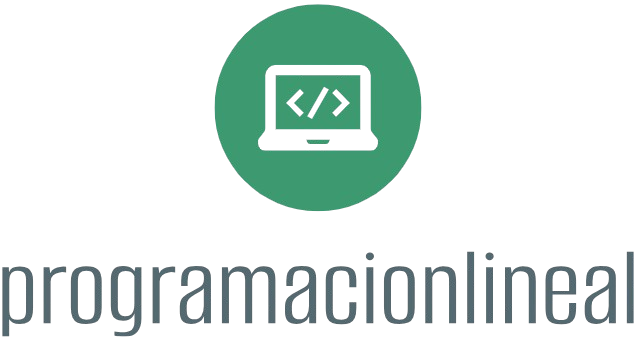APIs (Application Programming Interfaces) are crucial in modern software development, enabling different software systems to communicate and interact with each other. Understanding APIs can help you integrate services, extend functionality, and enhance interoperability. Here’s a comprehensive guide to understanding APIs:
1. What is an API?
An API is a set of rules and protocols that allows one software application to interact with another. It defines the methods and data formats that applications can use to request and exchange information.
Key Components:
- Endpoints: Specific paths or URLs where API requests are sent.
- Requests: Messages sent to the API to perform operations, such as retrieving or modifying data.
- Responses: Messages returned by the API, containing the results of the request.
2. Types of APIs
- Web APIs: Allow communication over the internet using HTTP/HTTPS protocols. Examples include RESTful APIs and SOAP APIs.
- Library APIs: Provide interfaces for interacting with libraries or software components. Examples include Java’s standard library API.
- Operating System APIs: Allow applications to interact with the operating system. Examples include Windows API and POSIX API.
- Database APIs: Enable interaction with database management systems. Examples include SQL and NoSQL database APIs.
3. API Protocols and Architectures
- REST (Representational State Transfer):
- Principles: Stateless, client-server architecture, uses standard HTTP methods (GET, POST, PUT, DELETE).
- Data Format: Typically JSON or XML.
- Characteristics: Simple and scalable, uses URLs to access resources.
- SOAP (Simple Object Access Protocol):
- Principles: Protocol for exchanging structured information using XML.
- Data Format: XML.
- Characteristics: Highly extensible, supports advanced features like transactions and security.
- GraphQL:
- Principles: Query language for APIs, allows clients to request specific data.
- Data Format: JSON.
- Characteristics: Flexible and efficient, reduces over-fetching of data.
- gRPC (gRPC Remote Procedure Calls):
- Principles: Uses HTTP/2 and Protocol Buffers for efficient communication.
- Data Format: Protocol Buffers (binary format).
- Characteristics: High performance, supports streaming.
4. How APIs Work
- Client Request: A client sends an API request to a server. This request includes the endpoint URL, method (GET, POST, etc.), headers, and sometimes a body containing parameters or data.
- Server Processing: The server processes the request, performs the necessary operations, and prepares a response.
- API Response: The server sends back a response to the client, usually in JSON or XML format. The response includes status codes, headers, and data.
Example:
python
Copy code
# Python example using requests library to make an API call import requests response = requests.get(‘https://api.example.com/data’) data = response.json() print(data)
5. Common API Terms
- Endpoint: A specific URL where an API request is made.
- Request Method: The HTTP method used in the request (GET, POST, PUT, DELETE).
- Headers: Metadata sent with the request, such as authentication tokens or content types.
- Parameters: Data sent with the request to specify what information is needed or to filter results.
- Response Code: HTTP status code indicating the result of the request (e.g., 200 for success, 404 for not found).
6. API Authentication and Security
- API Keys: Unique identifiers used to authenticate requests to an API.
- OAuth: An authorization framework that allows third-party applications to access user data without exposing credentials.
- JWT (JSON Web Tokens): A compact, URL-safe means of representing claims between two parties.
Example:
python
Copy code
# Python example using API key for authentication headers = {‘Authorization’: ‘Bearer YOUR_API_KEY’} response = requests.get(‘https://api.example.com/data’, headers=headers) data = response.json() print(data)
7. Testing APIs
- Postman: A popular tool for testing and interacting with APIs. Allows you to send requests, view responses, and automate testing.
- Link: Postman
- curl: A command-line tool for transferring data with URLs. Useful for testing API endpoints directly from the terminal.
- Example: curl -X GET “https://api.example.com/data” -H “Authorization: Bearer YOUR_API_KEY”
8. API Documentation
Good API documentation provides information on how to use an API effectively. It typically includes:
- Endpoints: Descriptions of available API endpoints.
- Request Methods: Details on what methods (GET, POST, etc.) are supported.
- Parameters: Information on required and optional parameters.
- Examples: Sample requests and responses.
Resources:
- Swagger/OpenAPI: Frameworks for designing and documenting APIs.
- Link: Swagger
- API Blueprint: A tool for creating API documentation and testing.
- Link: API Blueprint
9. Building Your Own API
When building your own API, consider:
- Design: Plan the API structure and endpoints.
- Documentation: Provide clear documentation for users.
- Testing: Test thoroughly to ensure reliability and performance.
- Versioning: Implement versioning to manage changes and updates.
Example:
python
Copy code
# Simple Flask API example from flask import Flask, jsonify app = Flask(__name__) @app.route(‘/data’, methods=[‘GET’]) def get_data(): return jsonify({‘message’: ‘Hello, world!’}) if __name__ == ‘__main__’: app.run(debug=True)
Conclusion
Understanding APIs is essential for modern software development. They enable communication between systems, streamline integrations, and enhance functionality. By learning about different types of APIs, protocols, authentication methods, and testing tools, you can effectively utilize and build APIs to meet your development needs.











